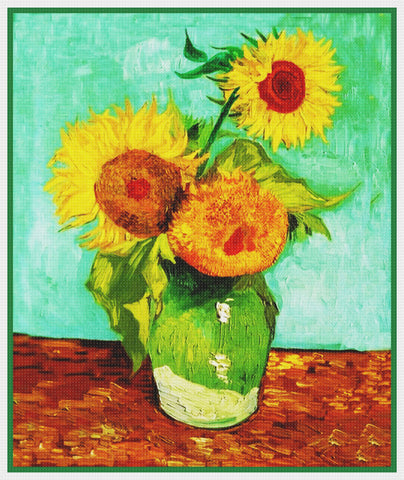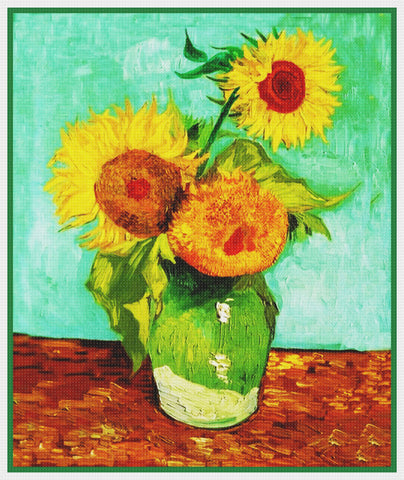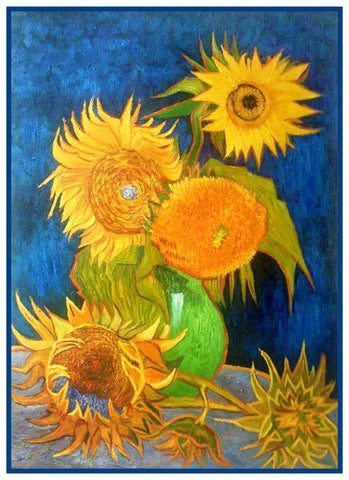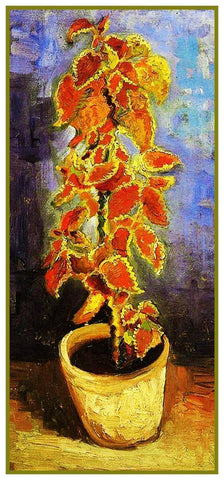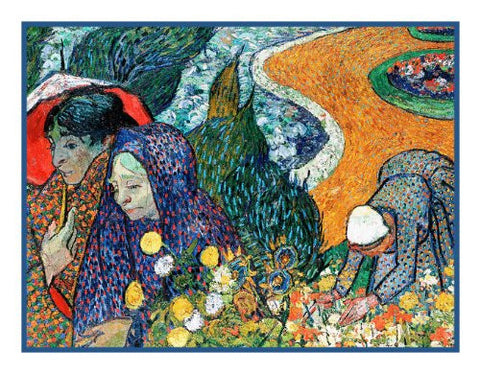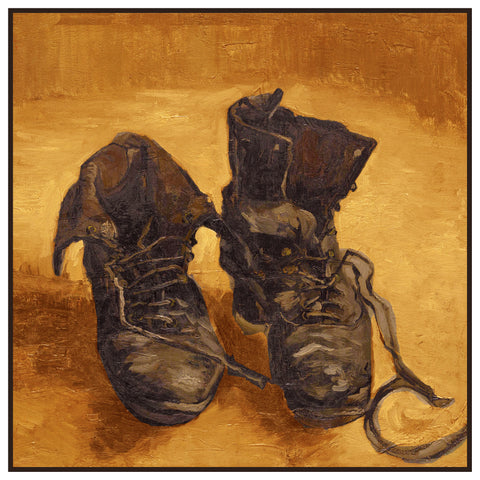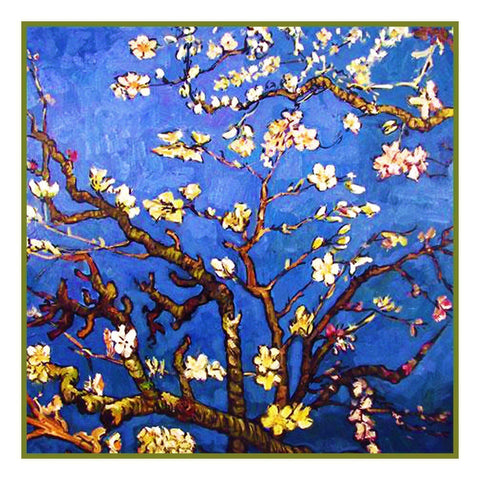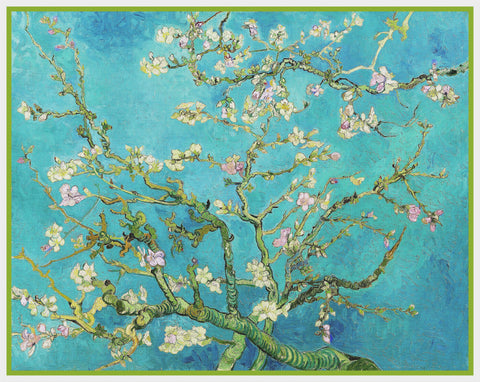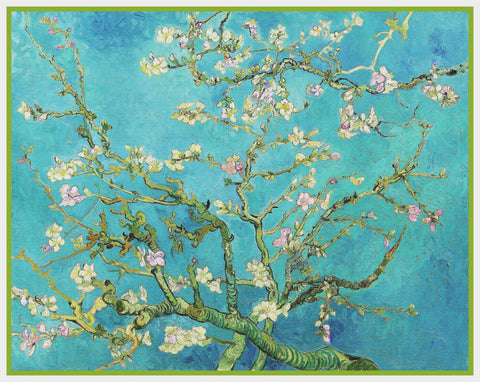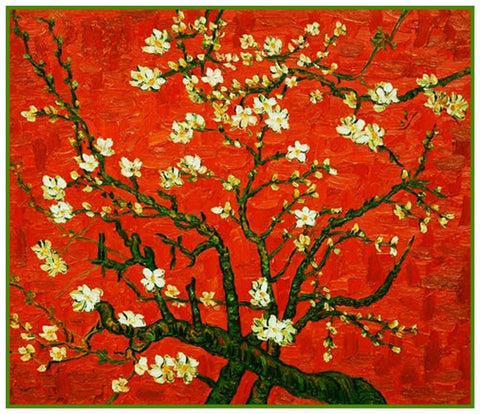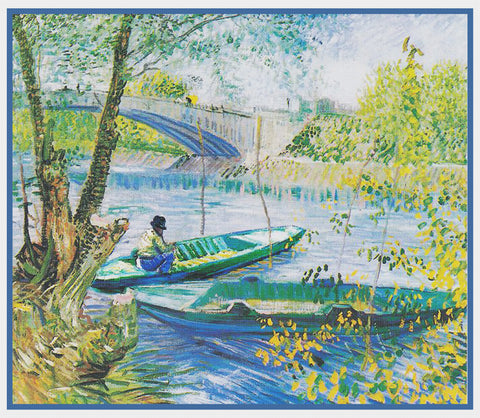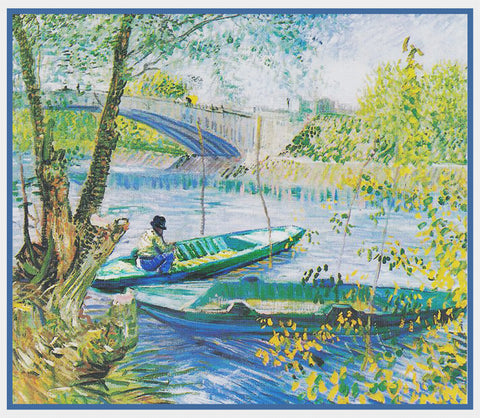- This product is a Digital Download of a COUNTED CROSS STITCH PATTERN. Instructions included. You can work from the digital pattern on your device or print the pattern on your own printer. The pattern is a multi-page enlarged chart that is easy to follow as you work.
- Chart is in Black and White using symbols to differentiate the different threads you will use. Chart is not in Color. See the detailed product images attached to this listing.
- NO thread or fabric are included.
- COUNTED CROSS STITCH PATTERNCharted for 14 count/grid fabric and DMC Cotton Floss. Finished Size is: 10 inches (140 Stitches) by 16 inches (224 Stitches).
- Chart/Patterns use up to 40 colors of floss. Full stitches only. No half stitches and no backstitching necessary.
This is a pattern that is used to sew and to create a cross stitch picture.
This is NOT a completed product. It is NOT a kit, it is a DIGITAL DOWNLOAD. It contains no floss or fabric.
Vincent Willem van Gogh, 1853 -1890, was a Dutch post-Impressionist painter whose work, notable for its rough beauty, emotional honesty, and bold color, had a far-reaching influence on 20th-century art. After years of painful anxiety and frequent bouts of mental illness, he died at the age of 37 from a gunshot wound, generally accepted to be self-inflicted (although no gun was ever found). His work was then known to only a handful of people and appreciated by fewer still. Following his first exhibitions in the late 1880s, van Gogh's fame grew steadily among colleagues, art critics, dealers and collectors. After his death, memorial exhibitions were mounted in Brussels, Paris, The Hague and Antwerp. In the early 20th century, there were retrospectives in Paris (1901 and 1905), and Amsterdam (1905), and important group exhibitions in Cologne (1912), New York (1913) and Berlin (1914). These had a noticeable impact on later generations of artists. By the mid 20th century van Gogh was seen as one of the greatest and most recognizable painters in history. In 2007 a group of Dutch historians compiled the "Canon of Dutch History" to be taught in schools and included van Gogh as one of the fifty topics of the canon, alongside other national icons such as Rembrandt and De Stijl. Together with those of Pablo Picasso, Van Gogh's works are among the world's most expensive paintings ever sold, as estimated from auctions and private sales.


![[product_title] - Orenco Originals LLC Counted Cross Stitch](http://www.orencooriginals.net/cdn/shop/products/01a10x16CVanGoghCafeTerraceatNight_fa77b61b-db33-4e03-a47b-d4b229438894_1024x1024.jpg?v=1599024614)
![[product_title] - Orenco Originals LLC Counted Cross Stitch](http://www.orencooriginals.net/cdn/shop/products/01a10x16CVanGoghCafeTerraceatNight_fa77b61b-db33-4e03-a47b-d4b229438894_medium.jpg?v=1599024614)
![[product_title] - Orenco Originals LLC Counted Cross Stitch](http://www.orencooriginals.net/cdn/shop/products/ChartExample_-_Copy_-_Copy_-_Copy_4_f6644edb-b6dc-4954-a756-810b4d25a73e_medium.jpg?v=1599024614)
![[product_title] - Orenco Originals LLC Counted Cross Stitch](http://www.orencooriginals.net/cdn/shop/products/ChartExample_-_Copy_-_Copy_-_Copy_1_-_Copy_3cca019b-a641-4417-8bfd-d336b644456f_medium.jpg?v=1599024614)
![[product_title] - Orenco Originals LLC Counted Cross Stitch](http://www.orencooriginals.net/cdn/shop/products/ChartExample_-_Copy_-_Copy_-_Copy_2_1fd4bb2c-4348-48e6-8734-92ba1ee8f7e4_medium.jpg?v=1599024614)
![[product_title] - Orenco Originals LLC Counted Cross Stitch](http://www.orencooriginals.net/cdn/shop/products/ChartExample_-_Copy_-_Copy_-_Copy_3_5fb494b6-54ab-4a53-b43a-ca56e071e89f_medium.jpg?v=1599024614)
